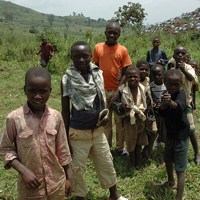This month, the Allied Democratic Forces (ADF), a Ugandan rebel group now based in the Democratic Republic of Congo, staged attacks that prompted more than 60,000 Congolese refugees to flee to neighboring Uganda. In an email interview, Kristof Titeca, senior research fellow at the University of Antwerp’s Institute of Development Policy and Management and the University of Ghent’s Conflict Research Group, described the ADF’s background and its recent resurgence.
WPR: What is the background on the Allied Democratic Forces in terms of their numbers and goals?
Kristof Titeca: The movement was started in 1995 in eastern Congo by Ugandan members of the Tabliq movement and remnants of National Army for the Liberation of Uganda (NALU) rebels, which had been fighting for the recognition of the Rwenzururu Kingdom in western Uganda. From the beginning, the ADF’s political aims had always been mixed. After starting its attacks in November 1996, the ADF claimed to be fighting the Museveni regime in Uganda, as well as fighting for the marginalized Muslim population in Uganda. At the same time, the movement was serving broader geopolitical functions: Both the Sudanese and the then-Zairan regimes were supporting the ADF—this support later stopped.

